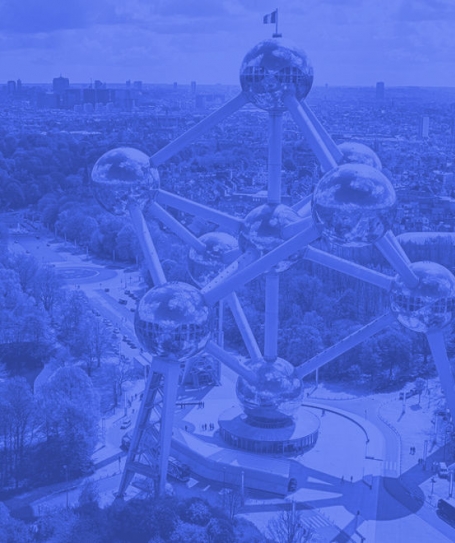Access to Data of 433 Million LI Members
This month, Microsoft caused a stir when they announced the news that they had acquired professional business network, LinkedIn, for $26.2 billion. Microsoft has already acquired Skype for $8.5 billion and, by adding LinkedIn, they gain access to the data of more than 430 million LinkedIn members.
Despite the 50% premium they have agreed to pay (on the closing share price, Friday 10th June), the general consensus is that it is a canny move by the cloud technology company, offering multiple layers of potential value and underscoring the weight they attach to gaining control of the communications platform in the B2B and executive workforce space.
Microsoft's Largest Acquisition To-Date
Taken in the context of its other acquisitions, LinkedIn is Microsoft’s biggest purchase by far and represents a strategic move to leverage both users’ data and the business content posted on the platform as well as potentially integrating these information assets within some of Microsoft’s own software offerings, such as Office 365 and Outlook. However, Microsoft CEO, Satya Nadella, has stated that LinkedIn will remain a separate entity, maintaining its “distinct brand, culture and independence” so how far any integration goes remains to be seen. Microsoft will also have significant scope to penetrate this rich end-user base with their other cloud based offerings - Azure, OneDrive etc.
Given that Microsoft’s acquisition, in 2014, of mobile ‘phone giant, Nokia, didn’t live up to mooted expectations and that $7.6 billion - almost the full purchase price ($7.9) - was subsequently written off in July 2015, it will be interesting to see how this new partnership evolves. Of course, the Nokia failure was overseen by former CEO, Steve Ballmer and current CEO, Satya Nadell had opposed it and appears to have a very different vision from his predecessor.
Another acquisition by Microsoft back in 2011 was Skype, which may have seemed a strange move at that time. However, with the ubiquity of Skype as the preferred business VoiP communications platform it now looks like a more savvy move, along with the acquisition of Linked In as one more piece of their growing ecosystem of online professional users.
Autonomy for LinkedIn
In his address to LinkedIn employees, CEO, Jeff Weiner says it was the word “independence” which swung the deal for him. Interestingly, he likens the LinkedIn acquisition by Microsoft to the acquisition of YouTube in 2006 by Google, in which YouTube was acquired but allowed to function with relative autonomy and saw its fortunes rise dramatically over the next few years. Jeff Weiner drawing this parallel begs the question, is Microsoft striving to emulate the Alphabet modus operandi by buying diverse but complementary organisations and allowing them a level of autonomy under the Microsoft umbrella, whilst maintaining them as a variety of options for the direction of future growth. Time will tell.
Complementary Cultures
Both sides expect the acquisition to complete this calendar year and both are at pains to express their similar cultures and intent, styling themselves as a highly complementary partnership with a “common mission centred on empowering people and organisations; connecting the professional world; creating more connected, intelligent and productive experiences”. With Microsoft’s solutions and 1 billion users worldwide, coupled with LinkedIn’s 433+ million members, they may just make it happen. In the words of Jeff Weiner's memo to LinkedIn staff, “Next play.”
Move to Repel Competitors
What is apparent is that Microsoft saw the need to head off competitors such as Google, Amazon and others to dominate the increasingly Cloud connected workplace. Microsoft is already gaining command of the cloud computing market and the cloud-based apps professional user base with the uptake of OS365 and Azure. What was missing was the social media communications piece and Linked-In is the de facto leader, certainly in the B2B space. Microsoft’s most recent acquisition of Wand Labs, provides conversational intelligence-gathering technology, deploying advanced machine learning to create what they term “Conversation as a Platform”. This also maps into what Document Boss views as the next frontier for “ECM/Information Management” sector - the capturing, analysing, managing and storing of both audio and video communications with the same ease as with electronic documents. See: Part One - The Importance of Audio Capture for ECM Vendors
About LinkedIn
LinkedIn was founded in 2003 and is the world’s largest professional network, available in 24 different languages in over 200 countries. Over the past year, the company has launched a new version of its mobile app that has led to increased member engagement, entered a new market with the acquisition of online learning platform, Lynda.com and rolled out a new version of its Recruiter product to its enterprise customers. These innovations have resulted in increased membership, engagement and financial results. LinkedIn’s stated vision is to create economic opportunity for every member of the global workforce through the ongoing development of the world’s first Economic Graph.
About Microsoft
Founded in 1975, Microsoft is a leader in software, services, devices and solutions that assist people and businesses to realize their full potential. Microsoft is a leading platform and productivity company for the mobile-first, cloud-first world, and its mission is to empower every person and every organization on the planet to achieve more.
Microsoft’s announcement
by Isabel Ross-Edwards







